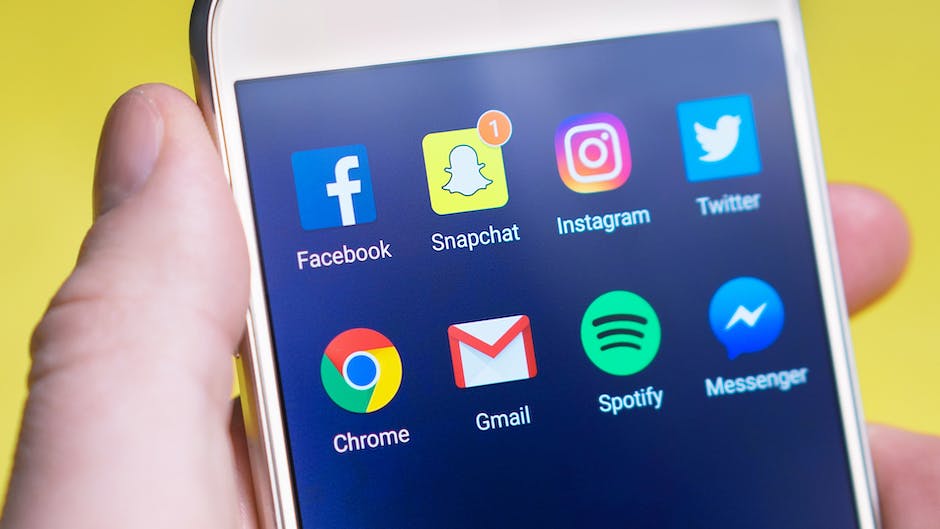What is Paid Media?
Paid media refers to any form of media exposure that a business has to buy. This includes things like advertisements on TV, radio, and in print, as well as online ads on websites, search engines, and social media platforms.
When properly executed, paid media serves as a catalyst for businesses to reach their target audience more effectively, such as:
Visibility: Paid media ensures that a business’s message reaches a large and specific audience. This approach is more reliable than solely relying on organic search results due to search engine algorithm changes.
Consumer Targeting: Paid media platforms offer businesses the ability to refine their audience based on demographics, interests, and online behavior. This helps in delivering ads to an audience most likely to engage or purchase.
Brand Awareness: For startups or businesses launching a new product, paid media aids in quickly spreading their message across platforms, increasing brand recognition and awareness.
Performance Analytics: Paid media platforms also offer detailed reporting and analytics. Businesses can analyze the performance of their campaigns and tweak them to get the best results.
Here are some common types of paid media:
Television Advertising: Commercials that air during TV shows. This includes network television, cable TV, and satellite TV advertising. It’s a powerful medium for reaching a broad audience.
Radio Advertising: Commercials broadcast on AM, FM, and satellite radio stations. Radio ads can target listeners based on geography, demographics, and even specific interests or listening habits.
Print Advertising: This includes ads in newspapers, magazines, brochures, flyers, and other printed materials. While print media has seen a decline with the rise of digital, it still holds value for certain target markets and local advertising.
Outdoor Advertising: Billboards, bus and bench ads, posters, and other forms of outdoor advertising visible in public spaces. This category also includes transit advertising seen on buses, trains, and taxis.
Direct Mail Advertising: Sending promotional materials directly to homes and businesses through postal mail. This can include catalogs, brochures, letters, and postcards.
Telemarketing: Involves using call centers or individual salespeople to reach potential customers by phone. While effective in some contexts, it can be intrusive and is regulated in many regions.
Cinema Advertising: Ads shown before movie screenings in theaters. This medium offers a captive audience and the advantage of a large screen and sound system.
Point of Sale Advertising: Promotional material placed where the product is sold, like in-store displays, shelf talkers, and checkout counter ads.
Sponsorship: Paying to sponsor events, teams, or individuals, often in sports, arts, or entertainment. The brand is usually featured prominently in association with the sponsored entity.
Online Display Advertising: These are visual ads that appear on websites, including banners, rectangles, skyscrapers, and interstitial ads. They can be static, animated, or interactive.
Search Engine Advertising (SEA): Also known as pay-per-click (PPC) advertising, this involves placing ads in search engine results. Google Ads is the most prominent platform for this type of advertising.
Social Media Advertising: Ads on platforms like Facebook, Instagram, Twitter, LinkedIn, and Snapchat. These can be tailored to specific demographics, interests, and behaviors.
Native Advertising: This form of advertising matches the look and feel of the content on the platform where it appears, such as sponsored posts on news websites or blogs.
Influencer Marketing: Paying influencers on social media or other platforms to promote products or services to their followers.
Email Marketing: Sending promotional messages or newsletters to a purchased or rented email list.
Affiliate Marketing: Paying a commission to external websites or individuals (affiliates) for traffic or sales generated from their referrals.
Video Advertising: Includes commercials on streaming platforms, YouTube ads, and other video platforms. This can be in-stream (like pre-roll ads on YouTube) or in display (video ads on websites).
Mobile Advertising: Ads that appear on mobile devices, including in-app ads, mobile-optimized web ads, and SMS marketing.
Social Media Ads: These are the sponsored posts that appear on your social media feeds. Businesses pay to have their content appear in front of a particular target audience.
Movies and TV Shows: One of the most common forms of product placement is in movies and TV shows. Products are placed in a way that they appear as part of the scene or storyline, often used or mentioned by characters.
Music Videos: Products can be featured in music videos, either as background elements or as more prominent features integrated into the video’s theme or story.
Video Games: In-game advertising involves placing products within the game environment, such as billboards in a racing game or branded items used by characters.
Podcasts and Radio Shows: Mentioning or discussing a product during a podcast or radio show, often as part of a sponsorship arrangement.
What is Owned Media?
Think of owned media as channels that a company has complete control over. In a practical sense, it encompasses a company’s website, blogs, email newsletters, and social media accounts. Essentially, any content distributed on these platforms is controlled by the company, making it a precious tool for shaping and projecting a brand’s image and controlling its narrative.
Why Use Owned Media: Crucial Advantages for Businesses
To simplify, let’s look at three standout benefits of employing owned media:
- Cost-effectiveness: Unlike paid media, owned media does not require a business to incur ad expenses. Creating a website or a social media page, for instance, can be done relatively inexpensively, but the potential for brand building and audience connection is tremendous.
- Long-term results: Owned media can be considered a slow burn, accruing lasting results over time – a luxury paid media doesn’t always afford. Properly leveraged, it can foster lasting relationships with customers and generate consistent organic traffic.
- Creative Freedom: Since businesses are in full control, they can use owned media to experiment with new ideas, designs, and campaign strategies. Embracing creativity could lead to groundbreaking, industry-altering concepts.
Here are some common types of owned media:
Company Websites: The brand’s official website is a primary form of owned media. It serves as a central hub for information about the company, its products or services, and its values.
Blogs: A blog owned by a company provides a platform to share insights, industry news, updates, and educational content directly with its audience.
Social Media Accounts: Social media profiles on platforms like Facebook, Twitter, Instagram, LinkedIn, and TikTok are forms of owned media. They allow brands to interact with their audience, share content, and build community.
Mobile Apps: Apps developed by a company for smartphones and tablets offer a direct line to consumers, often providing unique functionalities, content, or services.
Email Newsletters: Email communications that a company sends to a list of subscribers, often containing updates, promotions, educational content, or exclusive offers.
YouTube Channels: A dedicated YouTube channel allows companies to share video content, including tutorials, product reviews, behind-the-scenes looks, and other engaging content.
E-books and Whitepapers: Long-form content such as e-books and whitepapers are powerful tools for sharing in-depth information, often used in B2B marketing.
Podcasts: Company-produced podcasts can be used to discuss industry topics, share insights, and engage with listeners in a more personal and direct way.
Online Forums and Community Platforms: Some companies create and manage online forums or communities where customers can engage with each other, share experiences, and get support.
Physical Magazines and Catalogs: For some businesses, printed materials like magazines and product catalogs are still an important way to reach and inform their audience.
In-Store Digital Screens: These can display promotions, product information, and advertisements in physical retail locations.
Customer Loyalty Programs: Such programs can be managed through owned platforms, offering rewards and incentives for repeat customers.
Packaging and Branding on Delivery Vehicles: The delivery vehicles themselves can serve as mobile billboards, showcasing the retailer’s branding and messaging.
Customer Service Channels: These include chatbots, helplines, and email support systems, which not only assist customers but also convey the retailer’s brand voice and values.
Virtual Events: Hosting online events, product launches, or demonstrations can engage customers remotely.
Interactive Kiosks in Stores: These can offer information, facilitate orders, or provide entertainment to customers in-store.
Instructional Videos or DIY Guides: These can be particularly effective for retailers selling products that require assembly or have a learning curve.
A Retailer’s or other Businesses Physical Stores: They can be leveraged in multiple ways to enhance brand presence and customer experience.

Shared media is a type of marketing that happens when consumers interact with a brand or its content and subsequently share it within their network. It may take myriad forms including, but not limited to, reviews, likes, shares, and mentions on social media. This crowd-sourced form of publicity plays an integral role in modern marketing, impacting both brand reputation and potential reach.
When customers advocate for a brand or product, whether through a positive review or by sharing a piece of engaging content, it enhances the brand’s reputation. Valuable insight, it proves a brand’s worth beyond promotional assertions and advertisements. For example, chatter around Apple’s innovation and user-friendliness on various tech forums and social media platforms helped solidify its reputation as a cutting-edge technology provider.
Shared media has the power to magnify a brand’s reach exponentially. Each consumer has their own unique network of connections, each with their own sets of networks, and so on. A share from one consumer can lead to a domino effect that brings a brand or product into the lives of countless potential new customers.
Take the ALS Ice Bucket Challenge, for example. By leveraging shared media, the cause reached millions across the globe and consequently raised $115 million for ALS research.
And consider Baskin Robbins’ “Celebrate 31” campaign. In celebration of the brand’s 70-year history, Baskin Robbins offered all regular and kid-sized scoops for $1.31 on the 31st of each month. The campaign was a hit, not only because of the offer but also since customers shared their experiences both offline and online. The increased social sharing and customer engagement led to higher brand exposure and positively influenced the brand’s reputation.
Although shared media may be seen as a wildcard due to its uncontrollable nature, when harnessed correctly, it can drive substantial brand growth. It can serve as a robust crowd-sourced PR mechanism that influences brand perception and extends its reach across diverse demographic groups.
Social Media Platforms: Like Facebook, Instagram, Twitter, LinkedIn, and Pinterest. These platforms allow businesses to interact with customers, who can also share and comment on the content.
Online Reviews and Ratings: Websites like Yelp, Google Reviews, and Amazon, where customers can post their experiences and ratings of products and services.
Forums and Community Boards: Online spaces like Reddit, Quora, or industry-specific forums where users can discuss and share opinions about products or services.
User-Generated Content (UGC): This includes customer photos, videos, testimonials, or blog posts shared on social media or other platforms, often using specific hashtags or tagging the brand.
Collaborations with Influencers: Partnering with social media influencers or industry leaders who share content about the brand to their followers.
Shared Spaces and Events: These include pop-up shops, trade shows, or co-hosted events where the brand and other entities (like partners or local communities) share the space for mutual promotion.
Shared Streaming Content: Participating in or hosting webinars, live streams, or podcasts where interaction with the audience is encouraged.
Crowdsourcing Platforms: Utilizing platforms like Kickstarter or Indiegogo where the community can contribute to product development or funding.
Joint Ventures or Partnerships: Collaborating with other businesses or organizations for mutual promotion, often resulting in shared content across various media.
Wiki Pages: Platforms like Wikipedia or industry-specific wikis where content about a company or its products is created and edited collaboratively.
Interactive Blogs or Vlogs: Where audiences can contribute through comments, suggestions, or guest postings.
Shared Virtual Events: Hosting or participating in online events, workshops, or conferences where interaction and content sharing with participants are encouraged.

What is Earned Media?
Earned media refers to publicity and ‘word of mouth’ gained through promotional strategies other than advertising. When customers, press, or public share your content, speak positively about your brand or your products, that’s earned media. Note: while owned and shared media come from the brand itself, earned media is effectively “customer approved”.
Time to talk about why earned media is so valuable to marketers:
Bolsters Brand Credibility: When someone apart from you speaks favorably about your brand, it’s more likely to be believed by others. Trust from consumers in your brand increases.
Expands Brand Visibility: It widens your audience well beyond your usual customer base. Your content can be shared and viewed by millions in the digital sphere.
Cost-Effective: For businesses on a budget, earned media can be a less expensive way to spread the word about your brand. Remember, earned media can be a result of exceptional customer service, unique products or services, or participation in community events.
Here are some common types of earned media:
Customer Reviews: Feedback and ratings on platforms like Google, Amazon, Yelp, or TripAdvisor.
News Articles: Coverage in local, national, or industry-specific news outlets.
Press Mentions: When the media mentions a company or its products/services in their content.
Blog Posts: Independent bloggers writing about a company or its offerings.
Social Media Mentions: When users talk about or tag a company in social media posts.
Influencer Mentions: When influencers voluntarily mention or use a product or service.
User-Generated Content: Content created by users, like photos or videos featuring a product.
Viral Content: Content related to a company that gets widely shared organically.
Testimonials: Unsolicited testimonials from satisfied customers.
Interviews: Company representatives being interviewed in various media.
Podcast Mentions: Being talked about or interviewed on a podcast.
Forum Discussions: Conversations about the company on forums like Reddit, Quora, or industry-specific forums.
Video Reviews: Independent video reviews on platforms like YouTube or Vimeo.
Expert Endorsements: Recommendations by industry experts or thought leaders.
Awards and Recognitions: Receiving awards or recognition from industry groups or consumer organizations.
Case Studies: Case studies published by third parties highlighting the company’s success stories.
Guest Speaking Engagements: Company representatives being invited to speak at events, webinars, or conferences.
Academic References: Being cited or referenced in academic papers or studies.
Community Projects or CSR Initiatives: Participation in community projects or corporate social responsibility initiatives leading to media coverage.
Shared Social Media Stories: When customers or fans share a company’s content on their stories (Instagram, Facebook, etc.).
For Shared Media
Shared media is a collaborative space between the brand and its audience, promoting interaction and co-creation of content, while earned media is entirely generated by external entities, often as a result of the brand’s reputation, actions, or public relations efforts.
Let’s break it down further…
Control: Shared media involves content that is partially controlled by the brand and partially by the audience. It includes social media platforms where both the brand and users can post and interact.
Content Creation: Both the company and the users generate content. The brand might initiate content, but users can modify, comment, or share it.
Examples: Social media posts, user-generated content, forums, and community discussions.
Interaction: There is a significant level of interaction between the brand and its audience, often in real-time.
Goal: To engage with customers, foster community, and encourage users to share content with their networks.
For Earned Media
Control: Earned media is entirely outside the brand’s control. It is the exposure a brand receives through word-of-mouth, media coverage, or other external channels.
Content Creation: Content is created by third parties – such as journalists, bloggers, or customers – without direct involvement or prompting by the brand.
Examples: News articles, reviews by independent bloggers or industry experts, mentions in magazines, and customer word-of-mouth.
Interaction: The brand has little to no ability to interact directly with the content once it is published.
Goal: To gain credibility and exposure through third-party validation, which is not directly paid for or controlled by the brand.
FAQs on POSE Media

